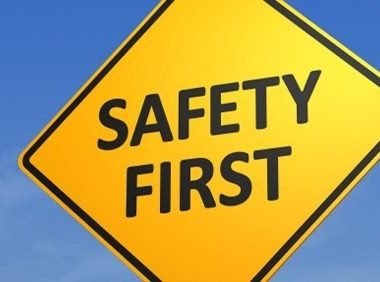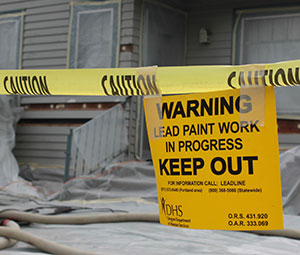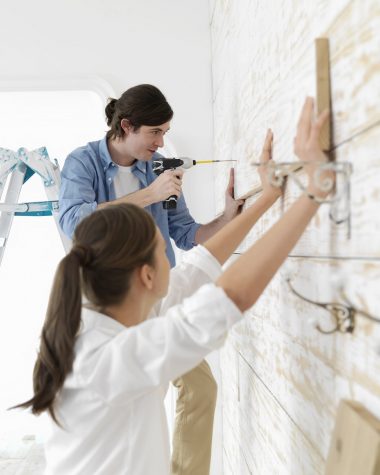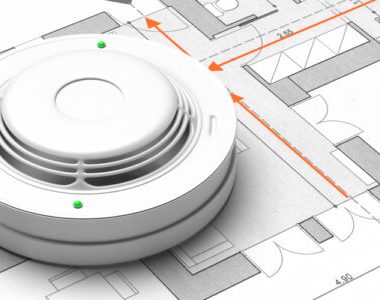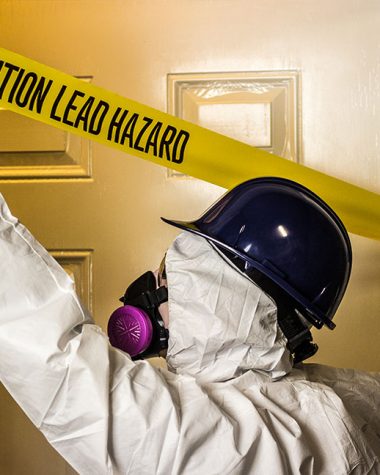Creating a Safe Working Environment in Home Renovations
When it comes to keeping your family safe and secure during a home renovation, it’s important to create a safe working environment. Home renovations can be a great source of enjoyment but they can also be a potential hazard if the proper safety precautions are not taken. Working with contractors, electricians, and other professional tradespeople can create additional hazards. Below are some tips on creating a safe working environment and keeping your family safe during home renovations:
1. Minor Repairs vs. Major Renovations
The first step in creating a safe working environment when it comes to home renovations is determining the scope of the project. Minor repairs such as painting, replacing fixtures, or installing new cabinets are usually safe to do on your own. However, more major renovations such as replacing kitchen counters, laying tile, or moving walls should be left to a professional.
2. Hire a Professional
If you do decide to hire a professional to handle the renovations, make sure they have the proper licensing and insurance required in your area. Asking for references is a good way to make sure you’re hiring a reliable contractor. It’s also important to get a written contract and make sure all parties understand the scope of the project and associated costs.
3. Establish a Safety Plan
Before any work begins, it’s important to establish a safety plan that can be followed by everyone involved. This can include setting up safety equipment and properly labeling hazardous materials. It’s also important to set a limit on the number of people in the space at any given time and establish a clear exit plan in case of an emergency.
4. Prepare the Space
Before starting any major work, it’s important to make sure the space is properly prepared. This includes clearing away any furniture or other potential hazards and properly protecting any areas that might be impacted by the renovation. It’s important to make sure all utilities and wires are identified and labeled.
5. Invest in the Proper Equipment
It’s important to invest in the proper safety equipment when it comes to home renovations. This can include items such as eye and ear protection, hard hats, gloves, and other protective gear. Depending on the type of project, specialized equipment such as scaffolding, ladders, and safety harnesses may also be necessary.
6. Follow Building Codes
It’s important to make sure all work is done according to local building codes. This includes making sure any wiring, plumbing, or structural changes comply with the codes, as well as using the proper permits. Hiring a professional who is familiar with local codes is a good way to ensure all work is done correctly.
7. Maintain the Space
During the renovation, it’s important to make sure the workspace is maintained and kept clean. This includes removing any debris, tools, or materials that could pose a danger. Proper lighting should also be maintained at all times.
8. Use Caution with Power Tools
Many home renovations require the use of power tools. It’s important to always use caution and properly follow instructions when using any power tool. Using the proper protective gear and following safety protocols is a must.
9. Ensure Good Ventilation
When working with any toxic substances or materials, it’s important to ensure a good ventilation system is in place. This includes using fans to circulate air and properly disposing of any hazardous waste materials.
10. Wear Appropriate Clothing and Footwear
It’s important to wear the proper clothing and footwear when performing home renovations. This includes sturdy shoes and clothing that covers the arms and legs. It’s also important to avoid wearing any loose clothing or jewelry that could possibly get caught in machinery.
11. Use Good Ladder Safety
If there is a need for any work to be done on high areas, proper ladder safety should always be used. This includes making sure the ladder is securely placed and keeping any tools or materials away from the edge of the ladder.
12. Regularly Check for Potential Hazards
Before and during the renovation, it’s important to regularly check for any potential hazards that could put your family at risk. This can include frayed wires, exposed plumbing, or any other materials or structures that could pose a risk.
Conclusion
Creating a safe working environment during home renovations is essential for keeping your family safe and secure. By following the tips outlined above and using common sense, you can help make sure any home renovation project is a success and ensure your family stays safe. At the end of the day, it’s important to remember that creating a safe working environment in home renovations is everyone’s responsibility.
What are some tips to ensure safety when renovating a home?
1. Wear protective gear at all times during the renovation process.
2. Keep children and pets away from the work area for their safety.
3. Be aware of the electrical safety hazard. Unplug any electrical appliances in the work area and hire a qualified electrician for any wiring changes.
4. Check for any signs of structural damage and have an engineer or building surveyor assess it before starting the renovation works.
5. Ensure any chemicals or hazardous materials are disposed of safely.
6. Have a fire safety plan in place and check smoke alarms are working.
7. Be aware of health risks from asbestos or lead paint and hire a qualified contractor for any hazardous materials removal.
8. Be aware of overhead hazards and use scaffolding or a secure platform for any tall renovations.
9. Use the correct lifting techniques when moving materials and equipment.
10. Be aware of machinery hazards and take the necessary safety precautions when using it.
11. Use good ladder safety when working at high places.
12. Regularly check for potential hazards throughout the renovation process.
What safety precautions should I take when doing home renovations?
1. Wear safety gear including goggles, hard hats, gloves, and masks when dealing with hazardous materials or tools.
2. Always have someone nearby to assist you with heavy items or ladders.
3. Follow all safety instructions for power tools and make sure cords are away from water or damp areas.
4. Close off all work areas and unplug all tools when not in use.
5. Make sure all ladders are secure and capable of supporting the weight you plan to put on it.
6. Clean up debris on a daily basis and dispose of appropriately.
7. Ensure all exits in your work area are clear.
8. Have a fire extinguisher and first aid kit within easy reach.
9. Check any newly installed outlets and extension cables for safety.
10. Regularly inspect the condition of any power tools and keep them out of reach of children.

